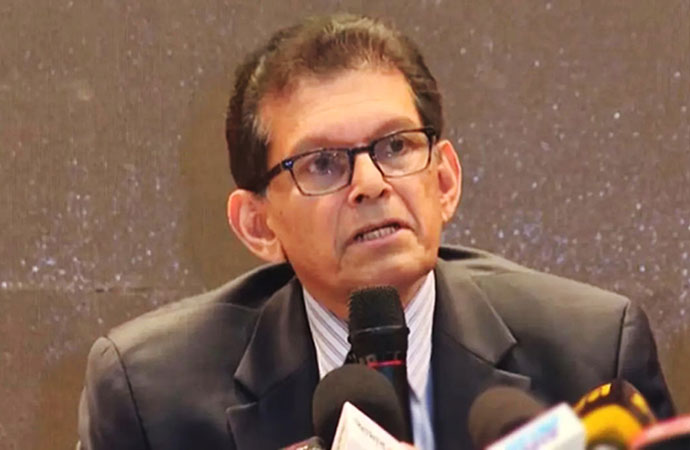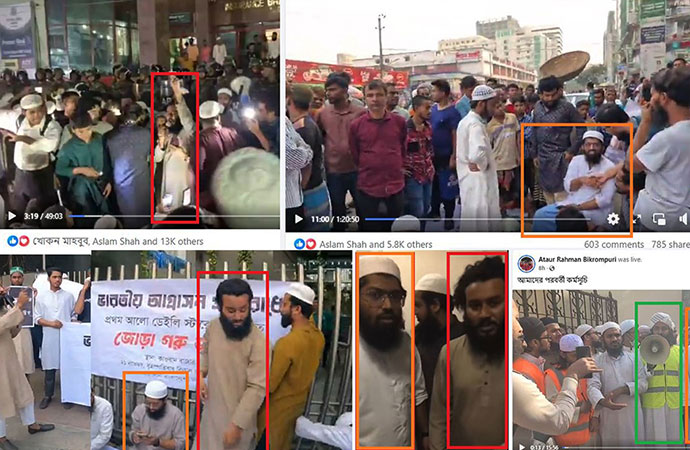Column

Collected
Social media is the most pervasive media presence in Bangladesh and elsewhere. In Bangladesh this is particularly so because many of the social spaces are hugely limited leaving only the social media space to be the one where one can freely mingle.
That part of the scenario is positive and is welcomed by all but there are other aspects of the space which cause deep concern amongst many because online abuse has become predominant and is used by various groups to serve their various interests including political ones.
Political use and bullying apart, one of the most extensive uses of social media is in gender bullying using a variety of tools including religious phraseology. Just any argument can be made to justify bullying so in a traditional society like ours it's useful to argue that bullying is actually religious obligation based argument.
Research shows that of all the abuse in the social media platforms the most widespread is sexual abuse. While it happens in a variety of shapes and forms it's not just gender based but is used against any vulnerable group whether gender based or faith based such as religious or socio-economic minorities and the marginalized.
Characteristics of Social Media
There are certain characteristics of social media that need to be framed first. Basically the following are notable including in Bangladesh.
1. It is not an organization or institution including government based. It's individual and in some cases groups based.
2. It functions without supervision, ethics code and socio-economic support. It's not funded by any agency, official and otherwise.
3. Its revenue generation comes almost entirely from viewers and adverts.
4. It is not only a new reality but also expands traditional media spaces.
5. It is in the informal space and can't be judged, supervised and controlled by formal codes of conduct at any level. None exist either.
In a way that means social media has become a free for all space. The organizations which run such platforms are either unwilling or unable to manage a safe space for its users. The restrictions and bans which they claim to look after are very inadequate. Many users can easily overcome them, particularly the abusers.
Following is a profile of social media users in Bangladesh
Social media distribution and usage map
1. January 2024 - total number of active users 53 million (app). Data collection methodology may not be fully correct as not sure external BD users -around 25 million migrant workers are left out from national surveys.
2. 66% (app) of users are male, 35% are female. data is a bit problematic as field data shows higher female users and thus higher scope for abuse.
3. Facebook remains the dominant platform. About 70% use Facebook. (Advertising reach figures are not directly equivalent to active user data)
YouTube, TikTok, and Instagram user data
1. YouTube's audience in Bangladesh was 58.8 percent male and 41.2 percent female.
2. TikTok had 37.36 million users aged 18 and above, representing 31.1 percent of the adult population and 48.3 percent of the local internet users. 64.3 percent male and 35.7 percent female.
3. 6.6 million Instagram users. Males accounting for 69 % of its users
Social media users have gone up manifold due to several needs and as they are linked to socio-economics this will not go down not just here but anywhere in the world.
Causes of use increase over time
1. Overall household capacity to buy devices has increased
2. High influx of money in the rural areas due to migration both national and international
3. Expansion of networks in general and use value including socio-economic encounters within families and across families
4. Economic needs such as mobile banking, fund transfer, hundi contacts
5. Social behaviour needs such as FB and YT shows for entertainment, romantic relations, social relations, etc
Just as use has gone up so has abuse. It's now a matter of great concern but what can be done is not known.
Levels of abuse are:
Meta - general misogynistic abuse such as women smoking which cuts across all women not targeting any particular one.
Meso - Focusing on specific female icons or competitors of women financially, socially or otherwise
Micro - Particular person is targeted
The general response to abuse has also been studied. They show the following:.
Response
Meta abuse - Meets with response by those opposed to misogyny and targeting women mostly on social media platforms
Meso abuse - resisted by groups members to which both victims and sympathizers may belong
Micro - Not much is done. This is the highest incidence of abuse and targeted and usually successful.
Whether safety steps are workable is a question that is being increasingly asked. Most feel they fall short and don't address the key issues. Based on research data we have the following information:
Safety issues
Abuse of women on social media is not an isolated issue of abuse but a collective one: It's societal, not a state/legal issue. Hence combating abuse on social media depends not on laws curbing abuse, legal or police action etc.
Various GO offices and NGOs have taken legal and rights awareness projects but no data shows lessening of abuse.
While conventional advice on safety can be given, few/none listen to it. Socio-economic and psycho-social vulnerability leads to victimization of women.
Hence, safety is not in careful use of social media but in analyzing the root cause of abuse and understanding it and strategizing for safety.
Data analysis points to economic empowerment
A 2 years long study at the field level shows "women with income "are the strongest socially experiencing least abuse of any kind. (Changing Villages Study project BIGD 2022-24)
Girls who earn are treated the best in case of illness and often replace or are jointly the head of the household. (Summative evaluation: Early Married Girls project. Rangpur. TDH Netherland (2022)
Parents protect and comply with age restrictions in case of marriage when girls are economically useful. (Prevention of EMG. GOB data)
Such conclusions won't make us happy but it seems gender abuse is also located in the general trend of all other abuse. And freedom from abuse doesn't lie in reforms which are either not practical or not possible but empowerment of the victim population. And within that framework economic empowerment works best.
*The gist of this paper was presented at a seminar on "women and safety" organized by the Canadian University, Dhaka.

























Leave a Comment
Recent Posts
The forensic clean up of the f ...
Much of the coverage centring the surge in Non Performing Loans (NPLs) ...
Hong Kong’s deadliest fire in ...
Hong Kong’s deadliest fire in decades left at least 44 people de ...
False document submission hurts genuine students’ ch ..
The Missing Ingredients for Peace in Palestine
Songs of Hyacinth Boats & Hands: Reading Conversatio ..
Executive Editor Julie Pace on why AP is standing fo ..